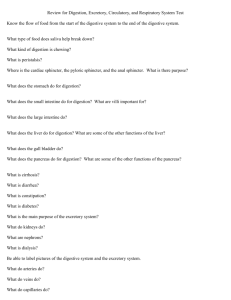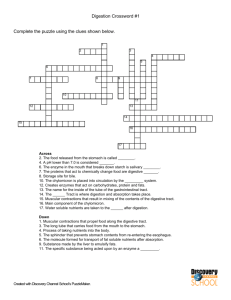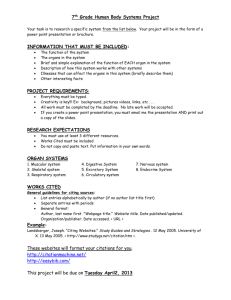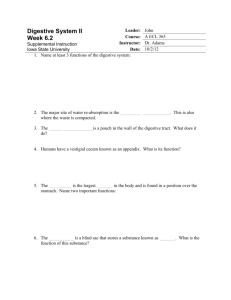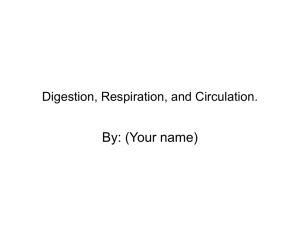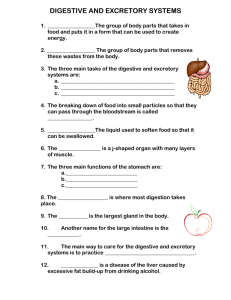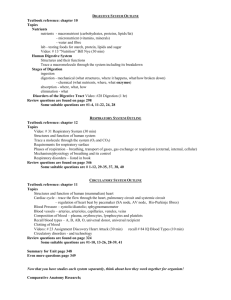Biology 20 Review Questions – Body Systems DIGESTION 1. What
advertisement
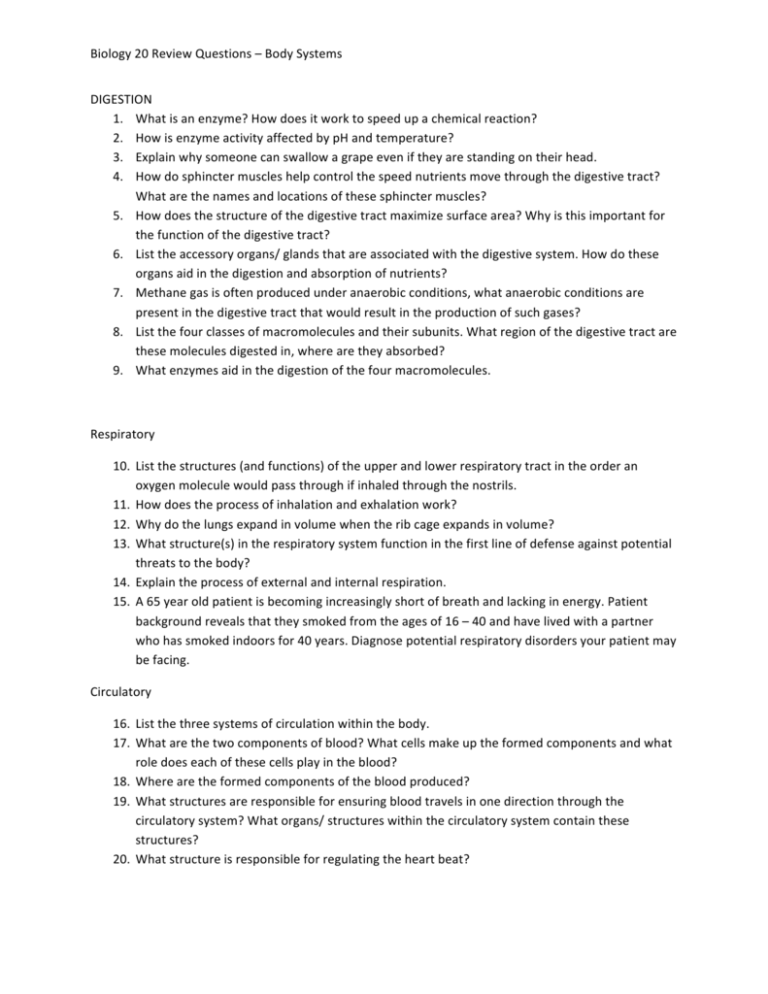
Biology 20 Review Questions – Body Systems DIGESTION 1. What is an enzyme? How does it work to speed up a chemical reaction? 2. How is enzyme activity affected by pH and temperature? 3. Explain why someone can swallow a grape even if they are standing on their head. 4. How do sphincter muscles help control the speed nutrients move through the digestive tract? What are the names and locations of these sphincter muscles? 5. How does the structure of the digestive tract maximize surface area? Why is this important for the function of the digestive tract? 6. List the accessory organs/ glands that are associated with the digestive system. How do these organs aid in the digestion and absorption of nutrients? 7. Methane gas is often produced under anaerobic conditions, what anaerobic conditions are present in the digestive tract that would result in the production of such gases? 8. List the four classes of macromolecules and their subunits. What region of the digestive tract are these molecules digested in, where are they absorbed? 9. What enzymes aid in the digestion of the four macromolecules. Respiratory 10. List the structures (and functions) of the upper and lower respiratory tract in the order an oxygen molecule would pass through if inhaled through the nostrils. 11. How does the process of inhalation and exhalation work? 12. Why do the lungs expand in volume when the rib cage expands in volume? 13. What structure(s) in the respiratory system function in the first line of defense against potential threats to the body? 14. Explain the process of external and internal respiration. 15. A 65 year old patient is becoming increasingly short of breath and lacking in energy. Patient background reveals that they smoked from the ages of 16 – 40 and have lived with a partner who has smoked indoors for 40 years. Diagnose potential respiratory disorders your patient may be facing. Circulatory 16. List the three systems of circulation within the body. 17. What are the two components of blood? What cells make up the formed components and what role does each of these cells play in the blood? 18. Where are the formed components of the blood produced? 19. What structures are responsible for ensuring blood travels in one direction through the circulatory system? What organs/ structures within the circulatory system contain these structures? 20. What structure is responsible for regulating the heart beat? Biology 20 Review Questions – Body Systems 21. List the vessels in the vicinity of the heart. Indicate which carry oxygenated and deoxygenated blood. 22. Describe the homeostatic response the helps to regulate the internal temperature of the human body: if the external environment is cold, if the external environment is hot. 23. How does the ABO antigen system work? Which blood types are universal donors? Which blood types are universal recipients? 24. Describe a disorder of the circulatory tract they may result in a patient having a lower than normal white blood cell count. Excretory 25. Sketch a nephron and label the parts. Which primary processes (filtration, reabsorption…) occurs in each region? 26. Which region of the nephron does passive transport occur? Active transport? 27. Which of the above processes are controlled by a hormone? Which hormone? 28. Describe the principle organs of the excretory system and trace the formation and excretion of wastes through the system. 29. What is the significance of the renal artery and vein in the production of urine? Muscles 30. Describe the sliding filament model of a muscle contraction. 31. What are the three types of muscle that are found in the human body? List structures where these muscle types would be found.

